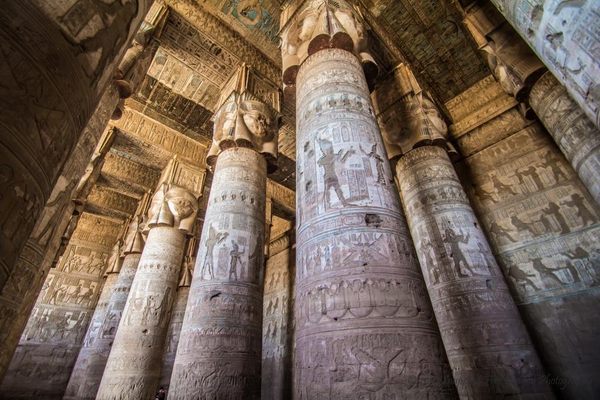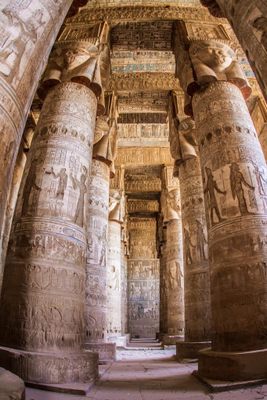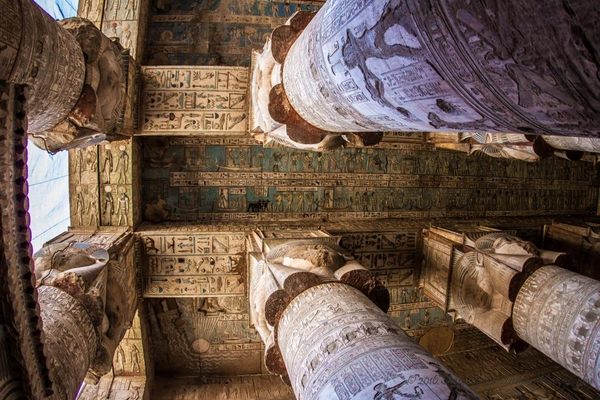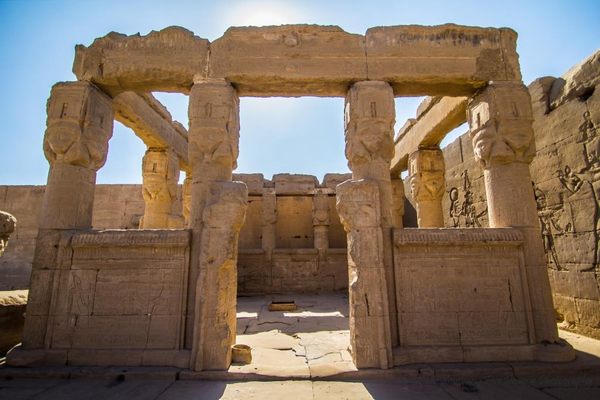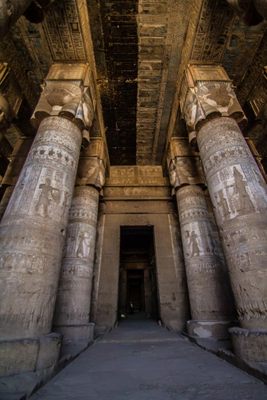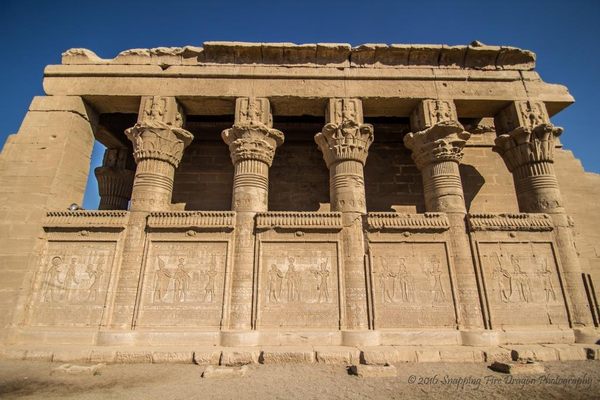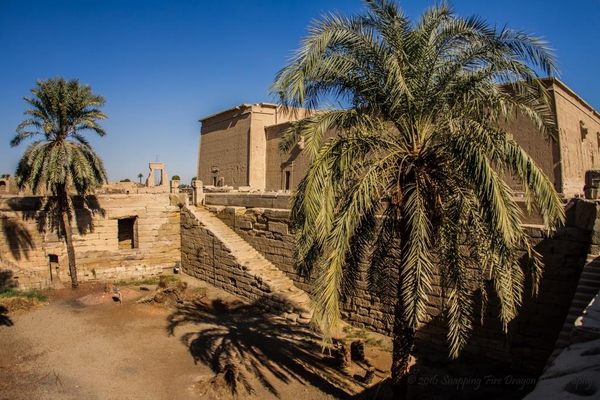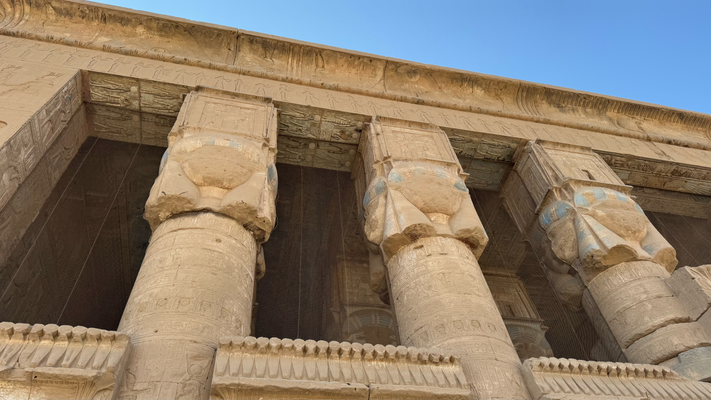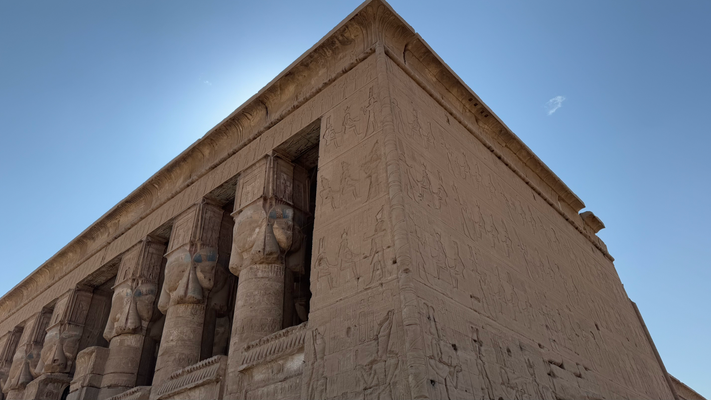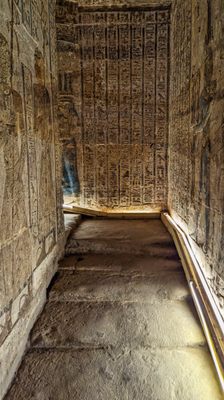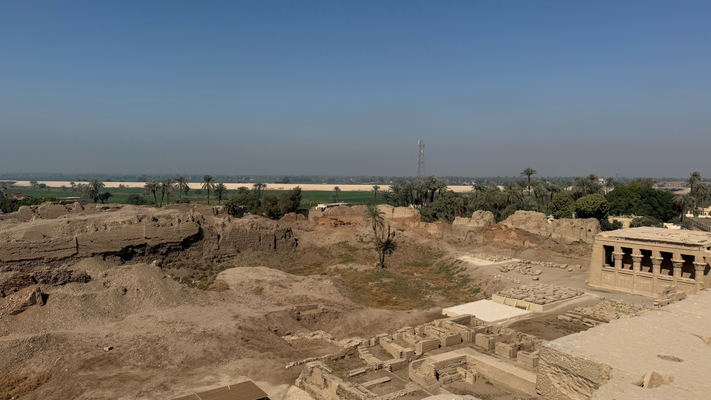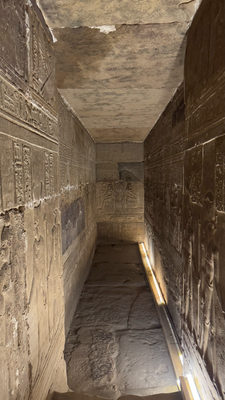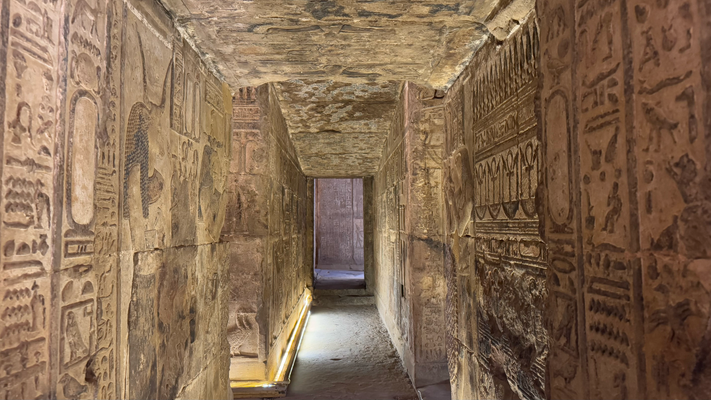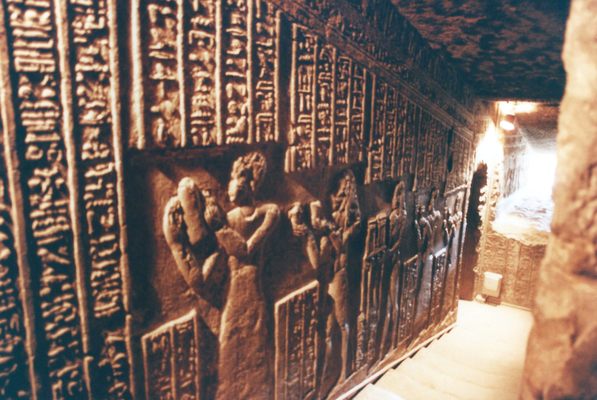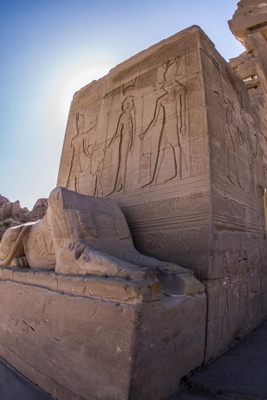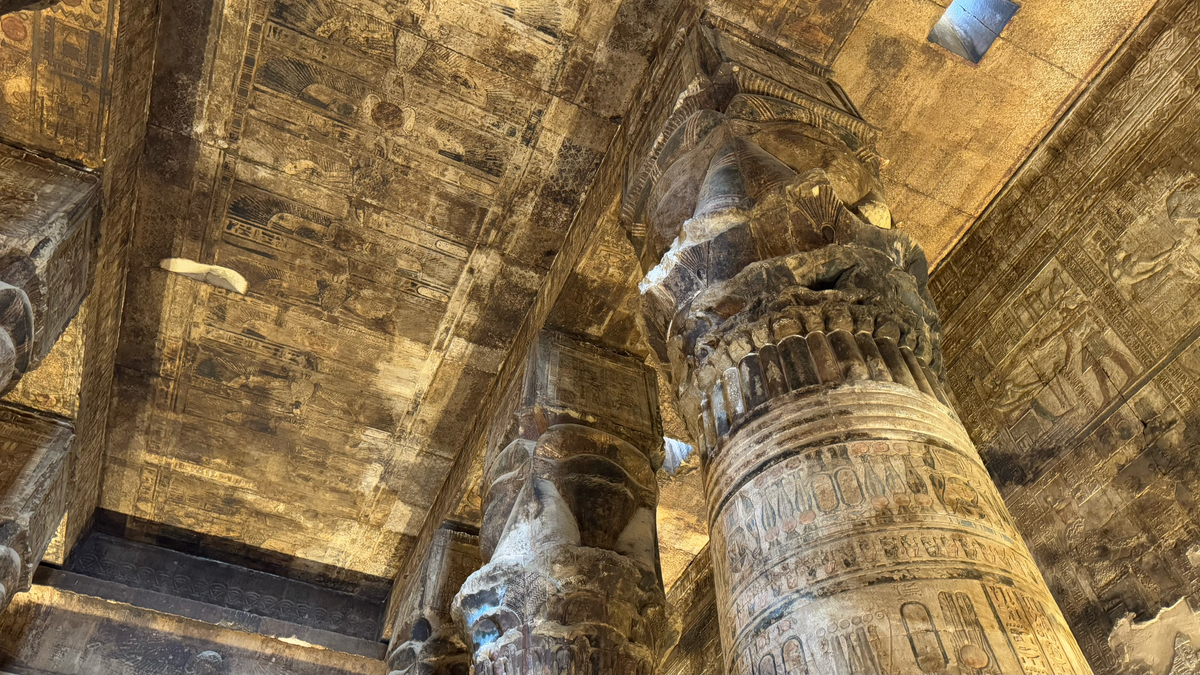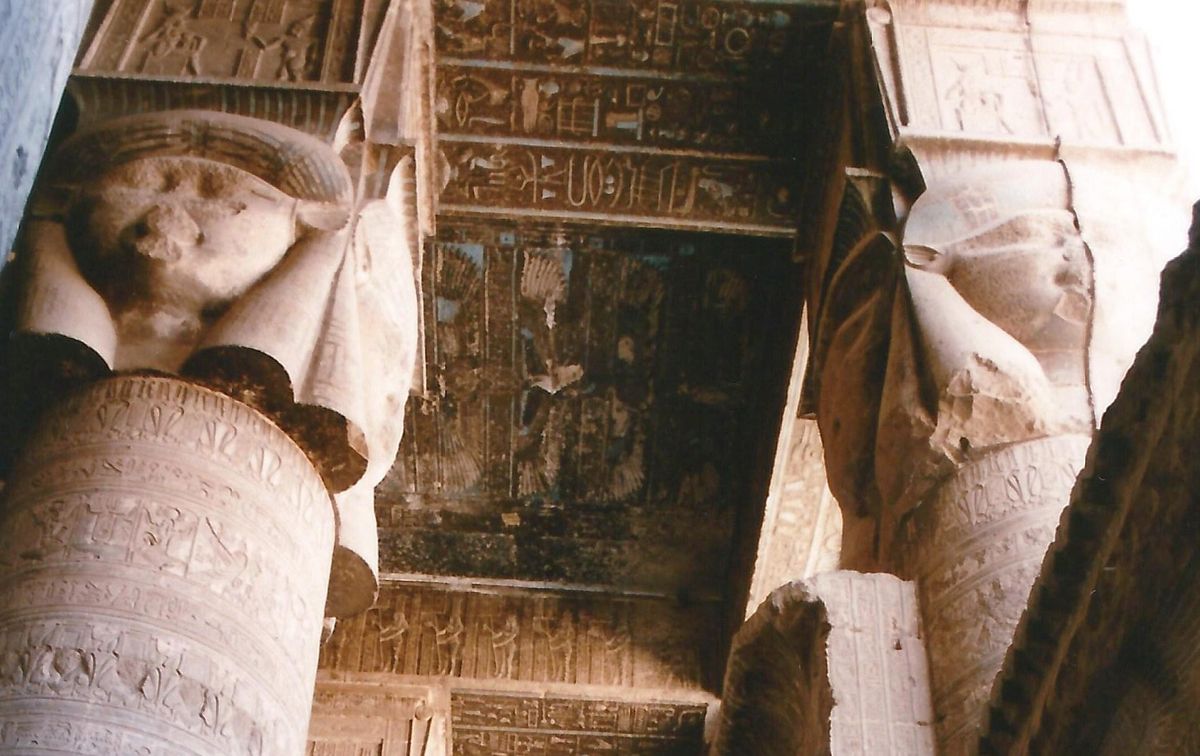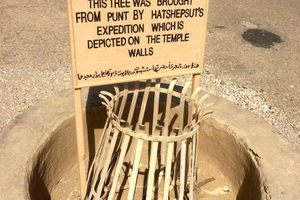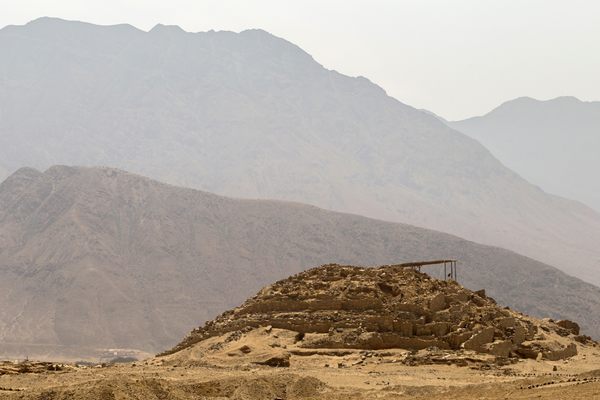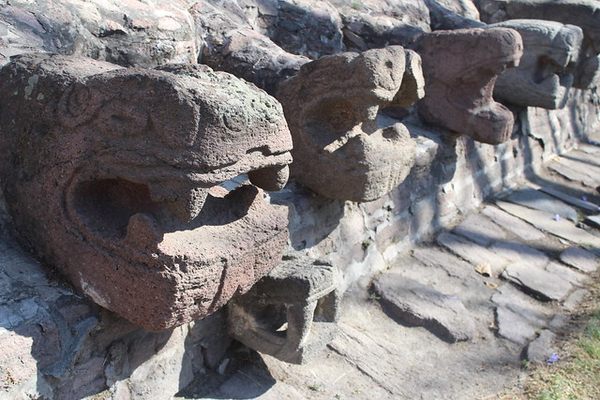About
If you've heard about the Dendera Light Bulb and want to see the famed relief up close and personal, you will have to visit the underground crypt of Hathor Temple at the Dendera Temple Complex in Qena, Egypt. If you're looking for a jaw-dropping experience, the beautifully intricate, 2,000-year-old temple is not to be missed.
The Temple of Hathor is one of the most well-preserved temples in all of Egypt. There are three temples to view in the complex: the birthing temple at the front, the temple of Isis behind the main temple, and the main temple dedicated to Hathor. There is also a sacred pool that you can still explore. It’s empty though; sorry, no swimming.
The colors seen throughout the temples are original, and amazingly vibrant considering the inside was once covered in soot from Bedouins and other desert peoples seeking asylum. They would use the temples as shelter, lighting fires for cooking and warmth. Since the temple complex used to be covered halfway in desert sand, it was easy for the soot to accumulate at the top. To show the amount of soot that had to be cleaned, archaeologists chose strips of ceiling in each temple to leave covered in soot as a comparison. The clearing of soot and all the sand burying the temples was tedious work that took years to complete.
The temple complex displays influences from Egyptian, Greek, and Roman rulers. There was also a Coptic Christian church on the premises near the birthing temple at one point. The main temple was built by Ptolemy XII and nearly completed by Queen Cleopatra VII, around 54 to 20 BCE. There is evidence of temples and other structures that date back all the way to 2500 BCE.
Hathor is the Egyptian sky goddess of sexual love, fertility, music, and dancing. It is also said she is the goddess of birth and motherhood. She is often depicted as the counterpart of Horus. In fact, Hathor translates to “House of Horus.” Inside the underground crypt, on the same relief wall as the famed Dendera light bulb (just to the right of it) is the most detailed depiction of Horus discovered to date. Getting to the crypt requires you to crawl on your hands and knees for a stint. Well, maybe not crawl, but entrance requires going down a steep staircase, turning around, getting on your knees and backing through so you don’t hit your head. If you are short, it helps.
The temple is a wondrous marvel to explore. Each of the rooms is as intricately decorated as the Great Vestibule, the front room at the main entrance fronted by 24 columns. The ceiling in the Great Vestibule is a tribute to Nut (Newt), Goddess of the Sky. Beyond are antechambers with crypts, chapel rooms, and a sanctuary. There is a corridor on each side of the second antechamber. The corridor to climb to the top of the temple is a spiral, just as a bird would ascend, while the corridor to leave the roof is a straight path down, just as a bird would dive. This is a tribute to Horus.
At the top of the structure, there is a small temple that was used for rituals to greet the rising sun, as well as another antechamber, called the Chapel of Osiris. Inside this chapel, one of the rooms holds a unique ceiling relief, called the Dendera Zodiac. It is considered the only complete “map” of the ancient Egyptian sky. The one at Hathor Temple is a replica, however. The real Dendera Zodiac is on display at the Louvre in Paris, France.
The birthing temple is also intricately decorated, and reliefs on the side depict the births of gods and Egyptian pharaohs. It is positioned at the front of the complex, across from a display of former statues and partial column pieces found during excavation. The Temple of the Goddess Isis is situated behind the main temple near the sacred pool. It is small and not as decorative, but still worth a look.
Related Tags
Know Before You Go
Some things to know if planning a visit to the Dendera (also spelled Denderah) temple complex: A professional tour guide is required to visit, since they can get the special permits needed to enter. Private tours will allow for longer viewing periods than a tour with a large group. Photography is permitted, but flashes are not.
Egypt Family Adventure: Pyramids, Mummies & The Mighty Nile
Cross dream-like deserts and uncover the secrets of ancient pyramids.
Book NowCommunity Contributors
Added By
Published
May 25, 2018



